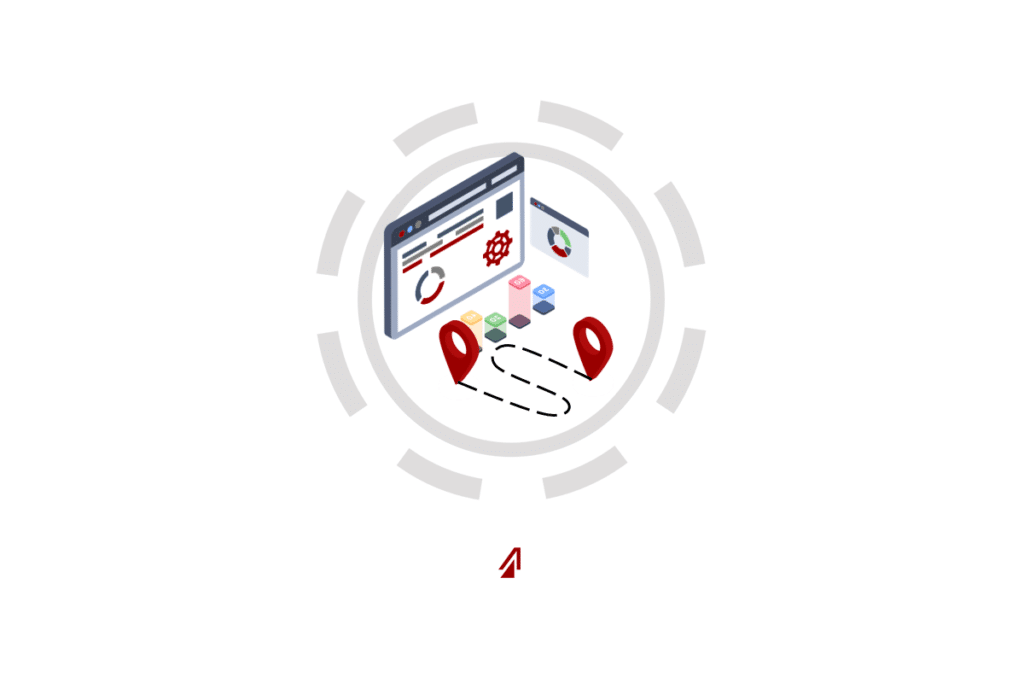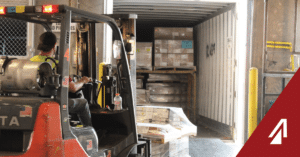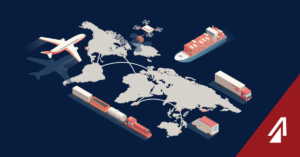Logistics managers are always looking for ways to optimize their logistics planning. They want to save money or provide better service; many are looking for improved efficiency and effectiveness. To help optimize your logistics plan, take a look at these four common methods.
Design and Engineer a Logistics Plan
Optimized logistics planning starts at the beginning. Companies may be just starting out, taking on a new client, or opening a new lane – no matter what stage of business they are in, it is important to meet your stakeholders’ needs, manage relationships, design pricing models, and manage costs.
Meet Stakeholder Needs:
Your stakeholders can be either internal or external, and each of them has important needs that must be fulfilled with your logistics plan. External stakeholders, like your customers, purchase freight that needs delivered to them. Effective logistics planning means finding out their exact requirements and creating a plan to meet them. Internal stakeholders are also important. Your company has pressure from shareholders and management to create and maintain a strict budget, to look for growth opportunities, and to build and maintain an effective, accurate database to assist with future decisions. Proper planning means having the personnel and tools in place to look for opportunities and give you a chance to act on them.
Manage Relationships:
Effective logistics planning means maintaining your business, customers, and lanes; to do that you must manage the relationships you have with your customers and vendors. It is important to offer quality customer service to your current customers because it adds significant value to your company. That generates goodwill and most often provides your sales teams with more opportunities to help you grow. The same can be said for your vendors. If you treat them well, they will be more enthusiastic to meet more of your needs and help you grow as well.
Design Pricing:
Another important piece of optimized logistics planning is to design effective price models. You should know your average shipment distance, weight, size, method, and fuel consumption. These are your base costs. You should receive information like nationwide fuel rates and holiday patterns as variable costs. Also, your company should be monitoring current market rates through load boards like Macropoint or from requests for bid from multiple carriers. If you are working on an established lane, look at load history as well. Once you have all of this data available, present the costs to your customer and begin negotiations. It is important to establish a rate that works for you and your customer.
Manage Costs:
Never let your costs settle, however. You need to constantly monitor and review new bids, vendor service records, market rates and more to make sure you are planning effectively.
We can create a custom plan fit to your needs: LEARN MORE
PDCA Cycle
One of the strongest continuous improvement efforts you can make for logistics planning is following the PDCA Cycle. PDCA stands for Plan, Do, Check, Act and is common in the Quality Assurance world. This cycle is a format for you to begin a process or system, test it, measure the results, and make changes before finally implementing a plan. It can be used for any process in logistics planning from handling new customers to testing new tender delivery systems. Any process or system can be evaluated with this cycle and allow you to make the right adjustments for your company.
Plan:
Planning is the fundamental step in most operations. We have covered this in other blogs (ISO 9001:2015, Full Logistics Management), but it is important to remember that this stage is where you will establish your company’s goals and your customers goals and make sure they align. You develop a plan to meet those goals and gather the resources you need. You will also evaluate the opportunities and risks associated with the new tasks, processes, or systems you need to reach the goals. Next, you test the plan.
Do:
Doing is the testing phase of the cycle. You implement the plan, either physically or through computer modelling, and create data that you will evaluate later. For logistics planning, this can be an operation like implementing a new carrier or testing a new reporting function. The key thing to remember in this phase is to record data. You will need to record how an operation is working before and during the implemented change. This data is essential to know how the plan is working and will assist in the Checking phase.
Check:
This stage is where you evaluate the data from the changes you made in the Doing phase. You will review the benchmark data against the current situation and see how the operation is performing. Then you report on this information to the decision makers.
Act:
The final stage of the cycle, Acting is where the rubber meets the road. The decision makers in your company will evaluate the logistics plan, the benchmark data, and the current data to determine if they will fully implement the new process, system, etc. They may approve the change and implement it fully; or they may see an area for improvement and restart the cycle.
The PDCA cycle can be ongoing as long as necessary until an operation has reached peak efficiency.

Considering outsourcing your logistics?: TALK WITH US
Integrate Technology
Technology is an important part of the modern logistics planning process. Modern companies are at a loss for personnel, and technology can help fill in the gaps. It can also run operations more efficiently and effectively than people and can help reduce costs. While there are hundred of new innovations daily to help logistics processes, these three are some of the most prevalent today.
Automation
Computers can help optimize logistics planning by using tools like AI, machine learning, or EDI. These processes reduce or remove human interactions and reduce costly mistakes. Programs like AI or machine learning can receive and interpret large amounts of data; this helps decision makers evaluate situations more thoroughly and come to better conclusions. Tools like EDI can transmit data from computer to computer automatically and help reduce the “telephone game” effect that slight errors cause. These tools are widely available and are becoming more affordable for any size operation.
Digital Supply Chains
These systems are nearly staples in the modern logistics planning. Digital supply chains involve highly sophisticated, centralized ERP systems made up of various functions of the supply chain. You can control operations like planning and transportation, inventory, warehouse management, human resources, and more from a centralized data control tower. This provides you visibility and can help perfect decision making.
Big Data
Visibility is key to optimizing a supply chain. You need to know where products are and when they were there, as well as countless other metrics to give you a picture of your supply chain effectiveness. Big data is how companies achieve this visibility. Effective supply chains constantly capture data through a product’s life cycle, its warehouse duration, and its journey to the final customer. Along each step is valuable data that informs you how the process is running and whether or not improvements can be made. Today, companies are beginning to use storage databases like blockchain or cloud computing to help protect the information and make it more readily available.
Our services provide you with advanced technology: LEARN MORE
Consider Outsourcing
Another effective way to optimize your logistics planning is consider outsourcing your logistics management operations. If shipping is not one of your company’s core processes, you might find that outsourcing to a 3PL can provide significant advantages.
Customer Service
3PLs can help provide superior customer service before, during, and after a shipment has taken place. They can assist with big picture operations like warehousing, pricing, or route management, or day-to-day operations like shipment scheduling and management. 3PLs can help with a wide range of logistics planning operations from inventory and IT to consolidation and order processing.
Innovation
Outsourced options, like 3PLs, constantly need to update and innovate to stay relevant in the marketplace. That way they are able to offer you the best service – through tools or techniques; the best prices – by finding the top carriers and negotiating better rates; and the best systems to meet your company’s goals.
Technology
Technology can be expensive today. Some smaller customers may not be able to afford all of the sophisticated soft- and hardware tools that generate the necessary data. That is not a problem. 3PLs have technology solutions that each customer can benefit from. 3PLs use centralized systems like TMSs as hubs for customers, carriers, and themselves to interact with other parties. Information can be shared quickly and safely. Other tools like tracking software, EDI, IoT tools, or other tracking devices are often available to customers without having to purchase and maintain them.
Savings
Not only can these options save you money on technology; they can save you money on other services like carrier costs. 3PLs have deep relationships with carriers and can often get better rates than customers themselves can. Outsourced options can also save customers time from having to manage the supply chain themselves.
Risk Management
Partnering with an option, like a 3PL, can help alleviate logistics planning risks like late, lost, or damaged freight. They start with using well-vetted carriers to move the cargo and pair them with a wide ranges of visibility tools to help customers monitor their freight. Also, many of these companies, and their carriers, have safety certifications from the USBP like CTPAT that proves their commitment to freight security. If something goes wrong, these partners have solutions in place to make situations right with customers and help reduce the overall risk.
Continued Improvement
Finally, outsourced options often promise a commitment to continued improvement. Some 3PLs receive quality certifications, like ISO 9001:2015, and prove they care about quality assurance within their own company and demonstrate it towards their customers. Often these companies take improvement further and regularly evaluate their processes. They follow steps, like the PDCA Cycle, to ensure that their methods are as efficient and effective as possible.
So, in order to save money, provide better service, and improve efficiency, many logistics managers are looking to optimize their logistics planning. Designing and engineering a plan can help get you on the right foot. Following the PDCA Cycle can help you perfect your plan. Implementing technology can help provide better visibility and bridge the gaps in your operation. For those gaps you are not able to bridge alone, you can partner with an outsourced option. Overall, these methods can help you focus on your core competencies and optimize your logistics plan.
Let’s get to work reducing your logistics spend and creating greater efficiency: GET STARTED



